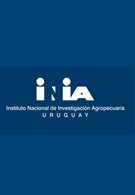ABSTRACT.- Honey bees (Apis mellifera L.) construct a structured nest with separated areas for the brood, pollen and honey that optimizes the functioning of the colony. However, in the Eucalyptus grandis plantations, bees tend to store a great amount of pollen and nectar in the brood area during the flowering period, reducing the space for the queen's egg laying. Through the python informatic program "CombCount" and an image program, the capped brood area and the proportion of cells occupied by brood, pollen or nectar during the flowering period of E. grandis in colonies with and without polyfloral pollen supplement was determined. In the middle of the flowering period of E. grandis, in just 9 days, a decrease of almost 40% of the total amount of capped brood was recorded. In this period in the brood area the cells occupied by brood decrease to values under 62% while the remaining cells are occupied mostly by pollen or nectar. The supplementation with polyfloral pollen did not affect these variations. At the end of the flowering period of E. grandis the colonies that received polyfloral pollen supplements had a population of bees 25% higher than the colonies without supplementation, although this difference was not reflected in the production of honey. This study shows that, paradoxically, an abundant offer of pollen and nectar during a brief period can limit the egg laying of the queen and have consequences on the bee population. © 2025 International Bee Research Association.

